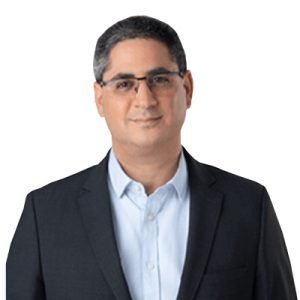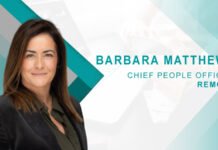1. Tell us about your role in Centrical?
I’m the founder and CEO of Centrical. Along with defining and driving the business’ strategy, I am a roll-up-the-sleeves sort, so I get involved in many aspects of the company on nearly a daily basis, mainly with our customers and prospects. That better allows me to lead and communicate with our terrific team as they work to help other companies help their employees perform their best.
2. Can you tell us about your journey into this market?
For more than 20 years, I’ve been involved with Business Intelligence, or BI, in companies like EDS and Deloitte. From the perspective of a CEO, my goal was to provide insights to managers in large enterprises so they could make better decisions. However, I realized that in order to move the needle at all those organizations, you must put the employees at the center of business success. When employees are motivated and engaged, when they have clarity of what are the right things to do, and when they know how to do those things right, they succeed and thrive. And so do their companies. It was this realization that gave rise to the founding of Centrical in 2013.
3. How do you think technology is changing the HR Sector?
Centrical’s platform is helping HR as well as line of business managers motivate employees to achieve their goals, train employees faster, manage their performance in real-time, and retain them, especially frontline employees, more easily. I see four reasons for that being the case. First, and most importantly, most HR leaders and business managers today are process focused and work in silos. Our platform is employee-centric, which gives both HR and business managers the power they need to engage, train and manage their workforce. Second, our technology helps make discussions with employees about performance be in real-time, not matters dimly recalled from weeks or months ago. This means manager-employee interactions are more relevant, more purposeful. Another reason we’re changing employee management are the advances we continue to make in personalized microlearning. That is a method which lets people learn in the flow of work; meaning everyone can be trained without any consequential interruption to their daily routine. Our difference is to draw on all available data sources within a company to determine precisely what an individual needs to learn, or learn better, to what degree, when and how often. This lets a culture of continuous learning take root and prosper because measurable benefits, from hitting KPIs, to reducing absenteeism, and more, are realized and reported to executive management.
4. Why do you think employee satisfaction and engagement are gaining more and more focus of the employers?
The current workforce is used to a great user experience as they have with Uber; Netflix and Fitbit. But most of their “work applications” are poorly designed and focused on the process, not the experience. This prompts alienation and contributes to disengagement. There have been several studies that found many in today’s workforce are simply disengaged from their jobs, even disconnected from their employers. By extension, employee satisfaction is a very real issue for anyone managing personnel. That said, the focus is borne out of a desire to boost productivity. It isn’t a matter resolved with traditional, monetary-based incentive programs. To see gains in productivity there needs to be meaningful behavior changes, the types that lead to long-term benefits for the company and its employees. To do that a business needs to incentivize the performing of positive behaviors, not just results. It’s been Centrical’s experience that when a company makes employees feel like they’re part of something bigger than themselves, their sense of connection and commitment improves, and so does their productivity.
5. Can you explain how your Performance Acceleration platform helps in optimizing the performance of employees?
Most organizations have siloed data sources that don’t work in concert to achieve optimum benefit or results. For example, HR may focus on engagement using their own set of tools. Learning & Development (L&D) might focus on separate learning tools. And LOBs key on performance metrics. As good as each might be, they’re not helping the organization to the max because they don’t talk to each other or share their data from a broad, clear view of employee performance. Unlike point solutions that look at employee performance through a single dimension, our holistic view of gamification, microlearning and performance lets HR or LOB managers have a much more accurate view — a multi-dimensional one — of the status, potential and needs of each individual employee. Our “Better Together” approach is borne out of logic. If you engage with gamification, involvement with and absorption of microlearning improves, which will show in real-time performance data that makes working with employees more effective for managers and better for the employees themselves.
6. How does gamification make it comparatively easy for employers to obtain better employee performance?
In and of itself, gamification doesn’t make it comparatively easy to obtain better employee performance. It’s the nature of the gamification, how engaging the game narrative is, how deep it can be insinuated into the activity, and how well it takes advantage of the appeal and value of competition – with oneself, against a peer, within a team and across teams. Most see points, badges and leaderboards as equaling gamification. Those classical elements are the surface of Centrical’s approach. To truly work, gamification needs to be an integral element of an activity. By doing so, the activity itself is more likely to be completed because it’s more fun to do. In addition, game mechanics with rigid structures, without the chance for customization, will result in little more than a sugar high. A brief upsurge in engagement and then a quick drop to noninvolvement. For gamification to do what it can, to improve performance, it needs to be linked to real-time performance and personalized microlearning. With that occurring there is a dynamic synergy that yields sustained engagement.
7. How do you differentiate your e-learning acceleration platform from others in the market?
We start by emphasizing the fact that we’re not simply about eLearning.
The Centrical platform is about equipping and enabling employees to perform better. As I’ve covered, our platform is unique because of its holistic approach. We help employees learn to know and, importantly, to perform; a reason our platform lets many and various KPIs be tracked, managed and adjusted in the face of rapid change. In addition, we’ve harnessed AI technology to support personalized microlearning spaced repetition.
8. What advice would like to give to the upcoming HRTech startups?
The role and place of HR in enterprises is changing from being a function separated from business units to one that is immersed in them. When I was working with BI organizations, they saw the need to reset themselves to get closer to the customer. Now I am seeing organizations resetting themselves to put more of an emphasis on making the employee the center of their business success.
9. What work-related hack do you follow to enjoy maximum productivity?
I try to keep my emails to three or four lines. Even with that brevity, I lay out the issue, what’s needed, a call to action or next step, and end with a due date. If it needs more discussion, it deserves a conversation. In meetings, I use the same template. In either case, more is done in less time.
10. How do you prepare for an AI-centric World?
If you’re not preparing now for an AI-centric World, it’s going to pass you by. At a basic level, AI will free up employees to tackle more intellectually demanding things. I am seeing that in a big way with our customers operating contact centers. Many tasks that had been handled by service agents have been automated, letting them better handle more complex nature customer issues while, at the same time, making their jobs more challenging. That aids productivity, profitability as well as customer satisfaction. Beyond that, AI speeds the making of better-informed decisions. With regard to that, AI works best when there’s a human-machine collaboration.
11. What are the major developments you are planning, in recent times?
We’re are advancing what I like to call the second wave of AI would be “when AI meets HI”, the combination of artificial intelligence and human intelligence (like the field managers’ intelligence). It creates amazing super-intelligence. The AI detects and monitors, while the humans provide the creative solutions. Representative of that is how we put a greater focus on empowering the field managers; helping them to evolve from messengers (of data and reports) to coaches that have the focus on the important things that need to be improved.
12. Can you tell us about your team and how it supports you?
Centrical is a fast-moving, fast-growing company. We’ve no time for vagueness or posturing. So my team supports me – and saves time in the process – by telling it to me straight. It’s also worth noting that each member of my leadership team is really strong at what they do. That’s really helpful.
13. Which book are you reading these days?
I’m reading “Microlearning: Short & Sweet.” It’s authored by Drs. Karl Kapp and Robyn Defelice, two gurus of learning and gamification. Even if you are well-versed in microlearning, it’s a worthwhile read. Plus it contains an excellent case study involving Centrical.
14. We have heard that you have a very joyful work culture, we won’t mind having a look at some of the pictures?
Yes, Centrical has a terrific work culture. In fact, in a recent survey by Comparably, an online job site and salary data source, we were given an A+ rating for our culture, one that’s encouraging and inclusive, but still puts the customer at the center. I should add, we drink our own champagne…practice what we preach. By that I mean everyone at Centrical is on our platform. On an internal basis we call it Centri. They use it to be the type of employees that drive business success. As to pictures, let me get back to you on that.
15. Can you give us a glance of the applications you use on your phone?
Audible, Centri, TripIt, Yelp, and DJI go — for my drone.

Gal Rimon CEO, Centrical
As Centrical’s (formerly GamEffective) CEO, Gal devises and directs the company’s strategy and manages its overall performance as a developer of employee performance enablement and engagement solutions that help companies more effectively engage employees to do the right training, in the right way, at the right time. It is able to achieve measurably better outcomes by utilizing real-time employee performance management, personalized microlearning and advanced gamification. Before Centrical, Rimon was CEO of Gilon-Synergy Business Insight, an Israeli-based leader in business intelligence, which was acquired in 2010 by Ness Technologies (NASDAQ: NSTC). Gal stayed on as a senior vice president and member of its executive management team there. Prior to that he was vice president, Customer Relations and Operations at Deloitte Consulting. Previously, he held roles at EDS and Bashan Consulting He holds an MBA in Marketing and Information Technologies from Tel Aviv University. For more information, please visit Centrical.com.












